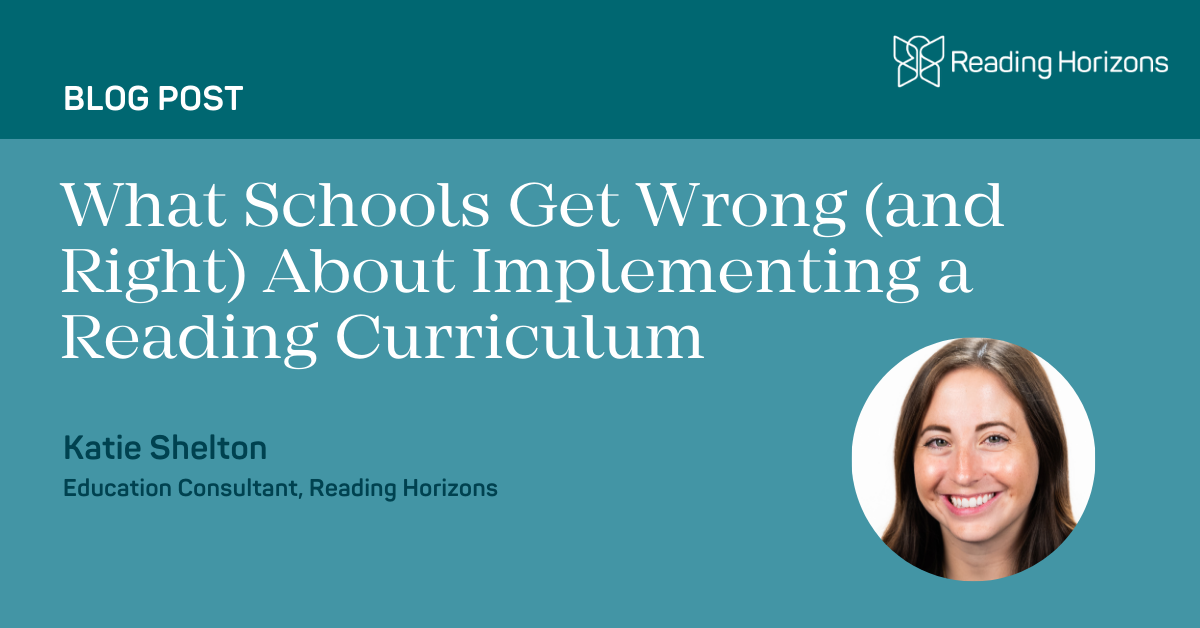By Katie Shelton, Education Consultant, Reading Horizons
In today’s education landscape, where research-backed literacy practices are finally getting the attention they deserve, implementing a new reading curriculum isn’t just about picking the right program—it’s about choosing a model for lasting instructional change. As someone who’s worked with schools across the country, I’ve seen what makes these efforts succeed—and where they stall. Whether you’re a district leader exploring options or a teacher on the frontlines of a pilot, here’s what you need to know.
Defining the Pilot: It’s More Than a Trial Run
When schools say they’re “piloting” a program, that word can mean a dozen different things. For some, it’s a short hands-on preview—teachers flip through materials or test out mock lessons. For others, it’s a few weeks of classroom use. However, when it comes to foundational reading, particularly structured literacy, a short-term pilot often doesn’t cut it.
These programs are intentionally designed to build from simple to complex skills. Teaching just a snippet doesn’t allow educators to see the full arc, or the student gains that come from sustained use. That’s why I advocate for a phased implementation: a year-long pilot that allows teachers to progress through the full scope and sequence with students, supported by regular professional learning and coaching.
The benefits? Deeper understanding, better data, and perhaps most importantly, the emergence of teacher leaders who become champions for the program. In one district, I watched pilot teachers organically lead training sessions for their peers—offering insights, modeling lessons, and anchoring the transition with real-world experience.
Supporting Teachers Beyond Day One
One of the most common missteps I see? Loading all the training into a single day—or a marathon August PD week. It’s too much, too fast. Teachers walk away overwhelmed, and by the time they’re knee-deep in classroom reality, the details get hazy.
The solution is twofold:
- Ongoing coaching: When an expert can step into classrooms and provide real-time feedback, teachers refine their practice and build confidence.
- Accessible Support: Say goodbye to impersonal help desks. Teachers need quick answers from people who understand both the program and the context. That kind of human connection keeps them engaged and committed.
What Success Really Looks Like—And How to Measure It
Before launching any program, I ask districts a simple yet powerful question: What does success look like for you? The answers vary—some want easier integration, others want to build teacher confidence, or better differentiate instruction. However, having a clear vision upfront sets the tone for a meaningful evaluation later.
Yes, benchmark data and assessments matter. But so does qualitative feedback. Did the program support new teachers? Were students more engaged? Did it make data-driven instruction easier to implement? Capture those reflections—often they reveal the heart of a program’s impact.
Building Sustainable PD That Works
Professional development isn’t one-size-fits-all. The first session should focus on readiness, giving teachers what they need to teach a lesson the very next day. After that, it’s about bite-sized learning and just-in-time resources: a five-minute video here, a pacing tip there.
Even better? Involving district coaches and specialists in the process from day one. When they learn alongside teachers, they’re equipped to lead ongoing training and support long after the consultants leave. That’s how you build long-term sustainability.
Achieving Buy-In and Balancing Change
Buy-in doesn’t happen through mandates—it happens through experience. When teachers see results, feel supported, and have a say in the process, their commitment deepens. Empowering educators to be thoughtful consumers—to ask, Does this work for my students?—creates a culture of intentionality.
Of course, every new implementation raises questions about striking a balance between the new and the familiar. That’s okay. It’s not about discarding what’s old—it’s about refining practice in service of students.
Want to see what successful implementation looks like?
Watch Session 1 of The Implementation Blueprint—a free, on-demand webinar that breaks down what strong reading programs have in common and how to make change that sticks.
Staying Grounded in Student Needs
At the end of the day, every decision should pass one test: Does this meet the needs of the children in front of us? When that stays at the center, everything else—curriculum choice, PD design, implementation timelines—falls into place.
Implementing a reading curriculum is a journey, not a checkbox. But with thoughtful piloting, strategic support, and a shared vision for success, schools can make changes that truly stick—and transform literacy outcomes for all learners.

